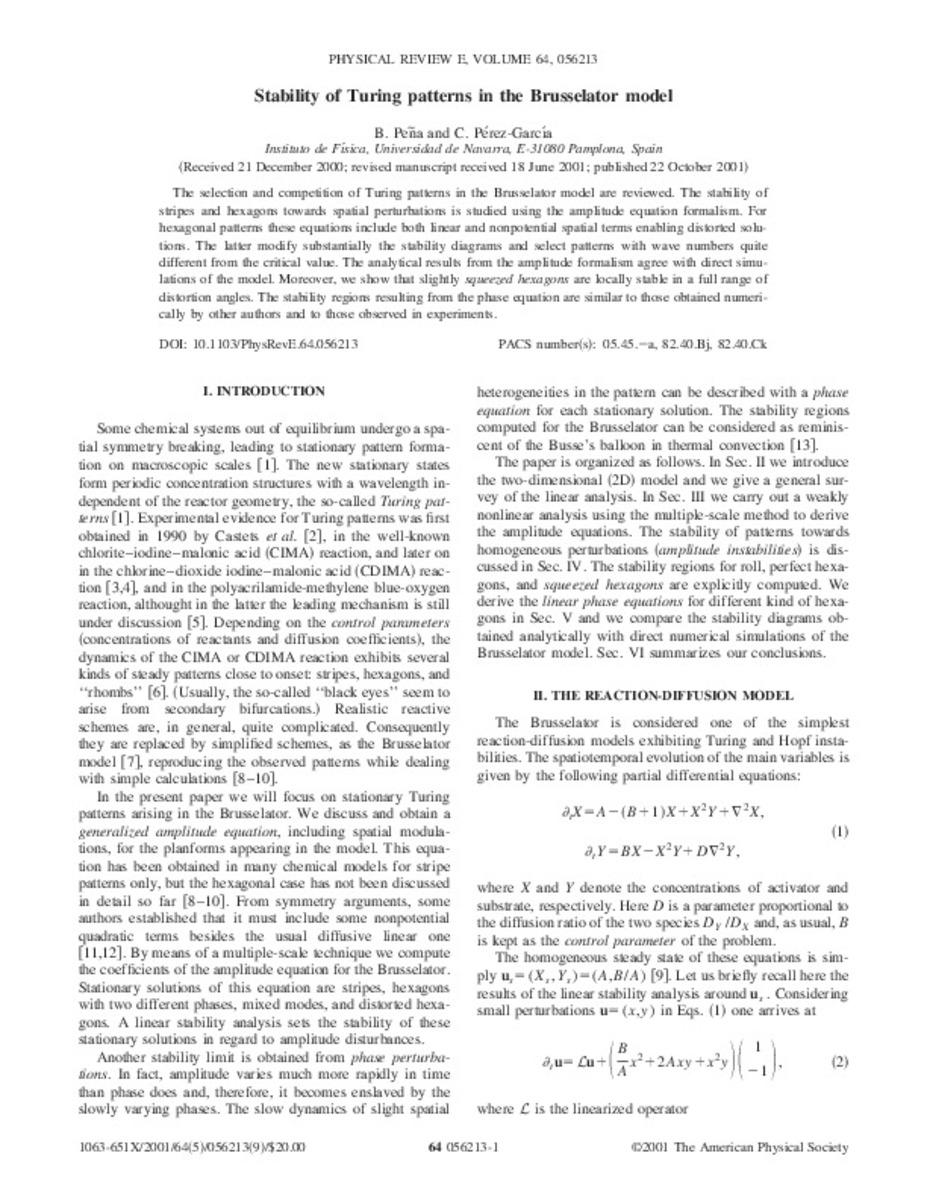Full metadata record
| DC Field | Value | Language |
|---|---|---|
| dc.creator | Peña, B. (B.) | |
| dc.creator | Perez-Garcia, C. (C.) | |
| dc.date.accessioned | 2008-02-21T11:32:19Z | - |
| dc.date.available | 2008-02-21T11:32:19Z | - |
| dc.date.issued | 2001 | - |
| dc.identifier.citation | Phys Rev E, 64, pp. 056213 | es_ES |
| dc.identifier.issn | 1539-3755 | - |
| dc.identifier.uri | https://hdl.handle.net/10171/1788 | - |
| dc.description.abstract | The selection and competition of Turing patterns in the Brusselator model are reviewed. The stability of stripes and hexagons towards spatial perturbations is studied using the amplitude equation formalism. For hexagonal patterns these equations include both linear and nonpotential spatial terms enabling distorted solutions. The latter modify substantially the stability diagrams and select patterns with wave numbers quite different from the critical value. The analytical results from the amplitude formalism agree with direct simulations of the model. Moreover, we show that slightly squeezed hexagons are locally stable in a full range of distortion angles. The stability regions resulting from the phase equation are similar to those obtained numerically by other authors and to those observed in experiments. | es_ES |
| dc.language.iso | eng | es_ES |
| dc.rights | info:eu-repo/semantics/openAccess | es_ES |
| dc.subject | Materias Investigacion::Física | es_ES |
| dc.title | Stability of Turing Patterns in the Brusselator Model | es_ES |
| dc.type | info:eu-repo/semantics/review | es_ES |
Files in This Item:
Statistics and impact
Items in Dadun are protected by copyright, with all rights reserved, unless otherwise indicated.






